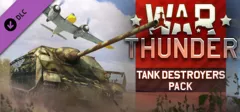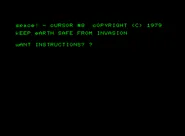Space Destroyers
Description
Space Destroyers is a Space Invaders variant. The player controls a tank at the bottom of the screen that can move back and forth and fire at alien invaders that are coming in from above. Four bunkers can be used to take cover from enemies firing down at you. The bunkers slowly disintegrate with each shot. Sometimes a UFO flies over to shoot down for additional points. Once all aliens have been killed the level is reset and starts anew, the player is granted an additional life and bonus points. Two players can take turns in the hot-seat.
Groups +
Analytics
Identifiers +
Contribute
Are you familiar with this game? Help document and preserve this entry in video game history! If your contribution is approved, you will earn points and be credited as a contributor.
Contributors to this Entry
Game added by vedder.
Game added May 15, 2021. Last modified February 22, 2023.









